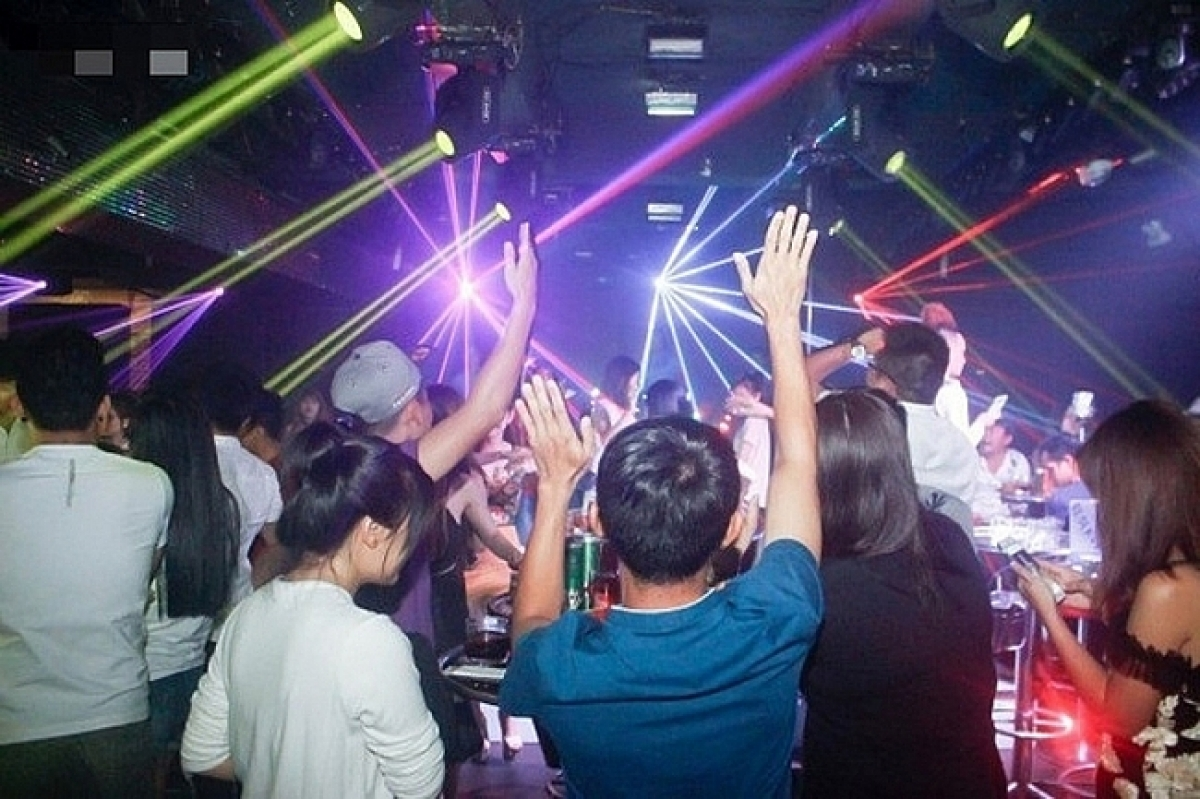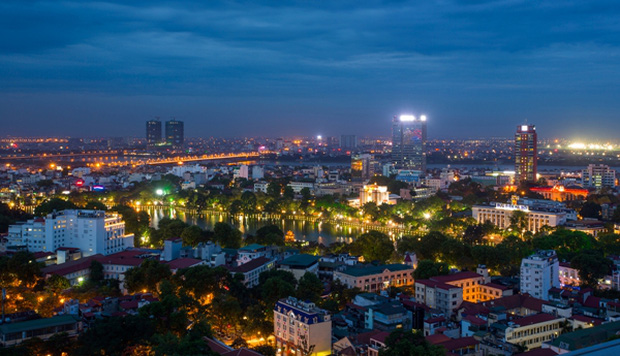Eight historical landmarks in the heart of Hanoi since French colonial
| Hanoi reopens bars, karaoke parlors, dance clubs | |
| Hanoi to ease population density in four inner districts by 2030 | |
| Organizations, agencies in Hanoi donate VND 12 bil to fund for sea, islands |
Hanoi post office
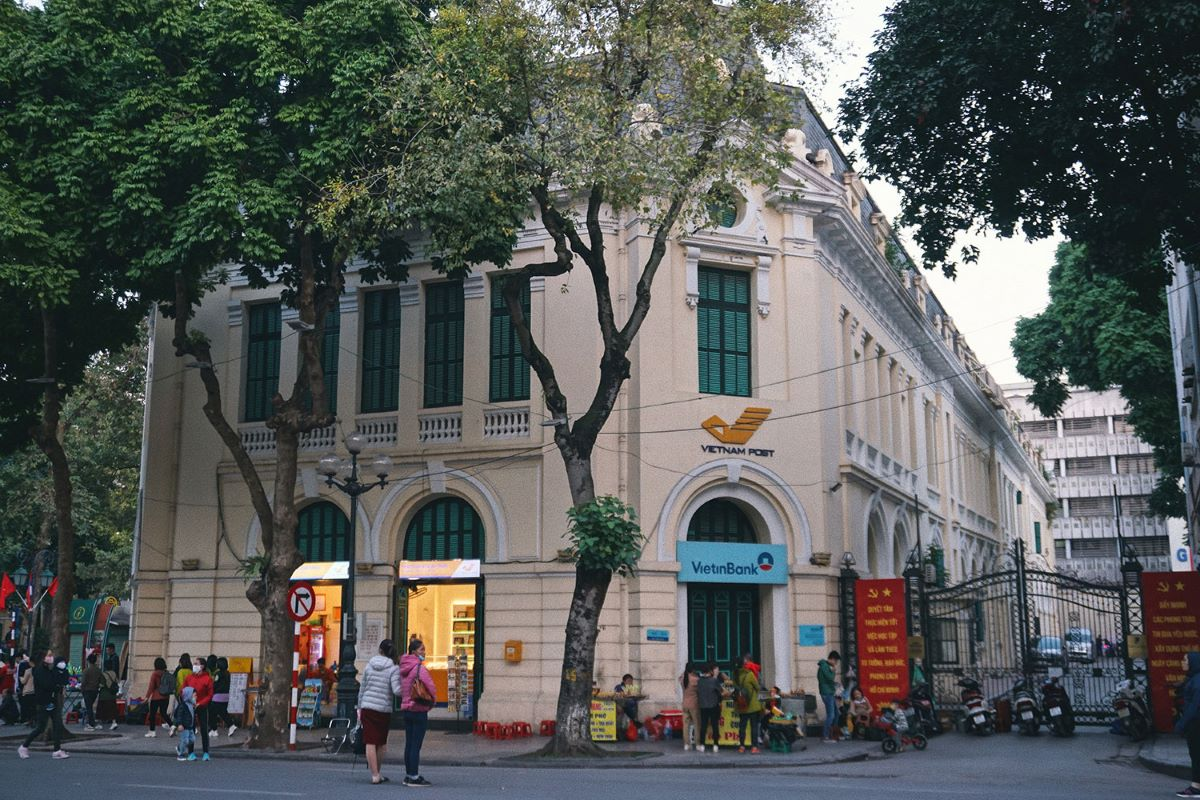 |
| Photo: VnExpress |
Designed and built by Henri Vildieu from 1894 to 1899, the Hanoi Post Office possesses a neoclassical architectural style (quite similar to the French administrative offices in the late nineteenth century). With a simple design with 4 blocks of 2-storey buildings, the use of wooden stairs, clock mounted on the roof and roofed with black ardoise tiles, the building has the main view overlooking Francis Garnier Boulevard (now Dinh Tien Hoang Street) and the other side towards Chavassieux street (i.e Le Thach street).
According to writer Nguyen Ngoc Tien, the end of the nineteenth century was also the time when the French completed the telecommunication network in Vietnam. Telegraph information was established between Hanoi and Saigon, Vinh, Hue and Da Nang, while Hanoi Post Office in 1889 had initiated all forms of operation: post, telegraph and telephone. Thus, this project is a milestone marking the "modernization" of information transmission in Vietnam compared to the rudimentary means before.
Hoa Lo Prison
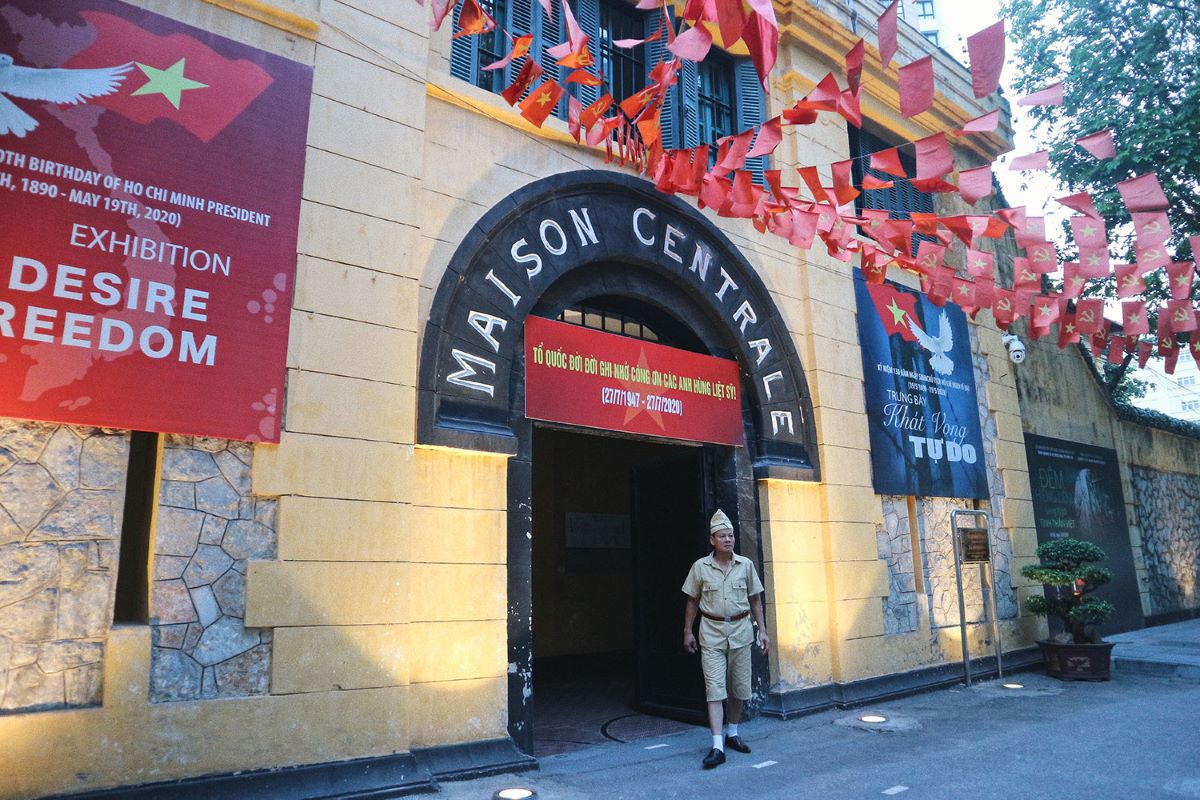 |
| Photo: VnExpress |
Hoa Lo Prison (now it is called historic relic Hoa Lo Prison) is located at address 1 Hoa Lo Street, Hanoi. In the past, this land was a village specializing in making all kinds of casserole, portable earthen stove,…. so this place is called Hoa Lo village (Hoa Lo means “ fire earthen stove” in Vietnamese). When the French occupied Hanoi, this was moved to another place to get land to build courts and prisons. Because this prison was landed on Hoa Lo village, people called this place “Hoa Lo Prison”.
Hoa Lo prison was built by the French in 1896 and was named “Central Prison”. The location of the prison was located on the full land of Phu Khanh village. The total area of Central Prison and the neighboring roads leading to the prison is 12.908m2.
Hoa Lo Prison has an important role in French colonists in suppressing the antagonist of the colonial system. So they built this prison in a large area with strong and complex defense systems. The building process was not completed, but in 1899 the French had to use it immediately because they wanted to capture people fighting against them. Many years later, the prison regularly was renovated, repaired, increased the cell area, etc. In 1912, the prison repaired the warehouse into a children’s capture place. In 1917, they rebuilt toilets and filtering holes. In 1945, they raised the wall surrounding the prison up to 1.5m high. The original design of the French only contains 450 prisoners, but in fact, they had up to 2,000 people.
State Bank of Vietnam
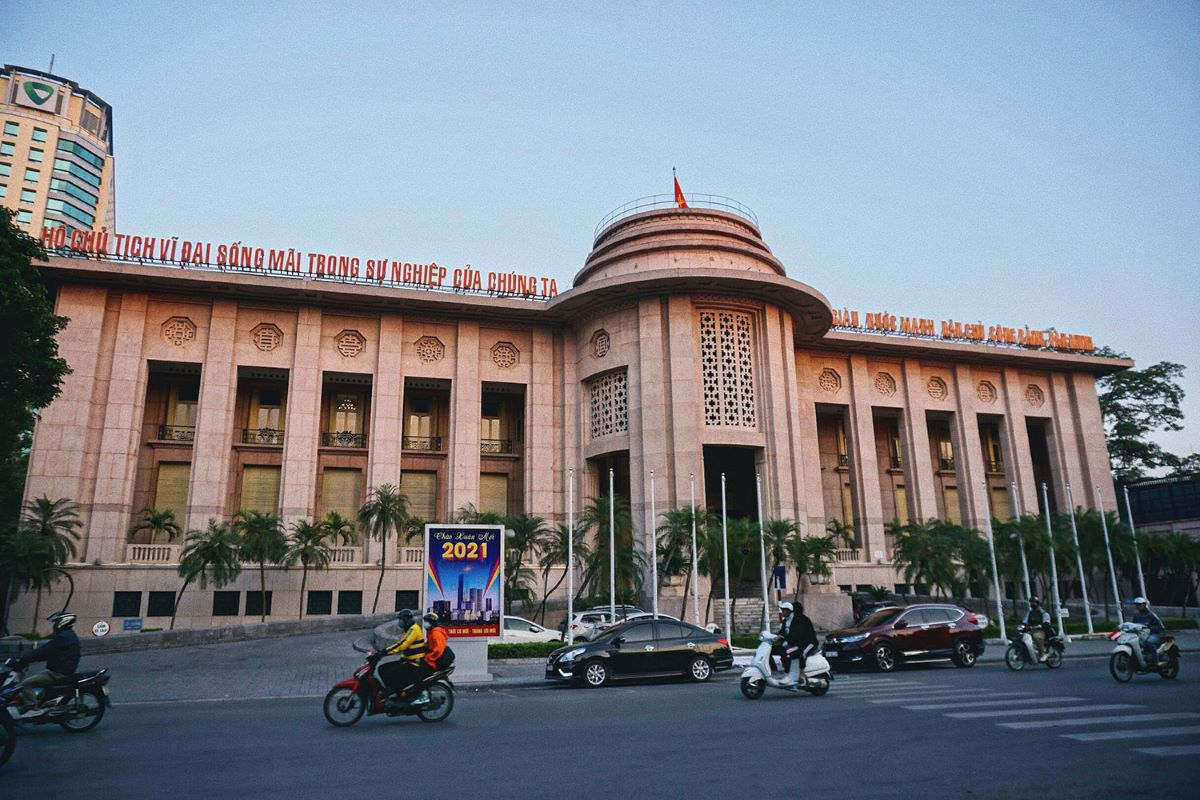 |
| Photo: VnExpress |
Before the August Revolution in 1945, Vietnam was a feudal-colonial country under the French colonialists’ rule. The banking and credit system was founded and protected by the French colonialists through the Indo China bank. It functioned as both the central bank of the whole Indochinese region (Vietnam, Laos and Cambodia) and a commercial bank with commercial banking operations and investment.
On the basis of the new economic and financial policy set out in the 2nd Congress of the Vietnam Workers’ Party (February,1951), President Ho Chi Minh signed Decision 15/SL on the establishment of the Vietnam National Bank – Bank of the first people’s democratic state in Southeast Asia in order to carry out five urgent missions: issuing banknotes, managing treasury, carrying out credit policy in order to facilitate production and coordinating with the trade authorities for monetary management and struggling against the enemy. The foundation of the Vietnam National Bank was the result of the struggle process to develop an independent, and autonomous monetary and credit system, marking a new development step, i.e, changing the quality of the national monetary and credit sector.
St. Joseph Cathedral
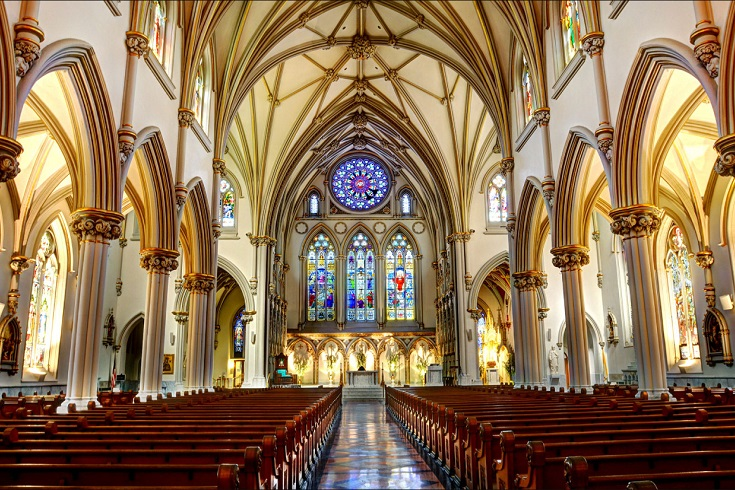 |
| Photo: Vietnamdiscovery |
Hanoi's neo-Gothic St Joseph Cathedral was inaugurated in 1886, and boasts a soaring facade that faces a little plaza. Its most noteworthy features are its twin bell towers, elaborate altar and fine stained-glass windows. Entrance via the main gate is only permitted during Mass: times are listed on a sign on the gates to the left of the cathedral.
In 1882, after the French army conquered Hanoi, the cathedral was constructed and completed in 1886. The cathedral and Nha Chung area were built on the land formerly belonging to Bao Thien pagoda, which was built under Ly dynasty.
The architecture with domes of the cathedral follows the Gothic style and design of Paris Cathedral. It is 64.5m in length, 20.5m in width with two bell towers of 31.5m-height. Though the appearance of the cathedral, from the doors, the colorful window glass, to the religious paintings for decoration follows Western style, the main interior part is decorated in Vietnamese way with two typical colors yellow and red. Outside, in front of the cathedral is the statue of Mother Maria.
Government Guest House
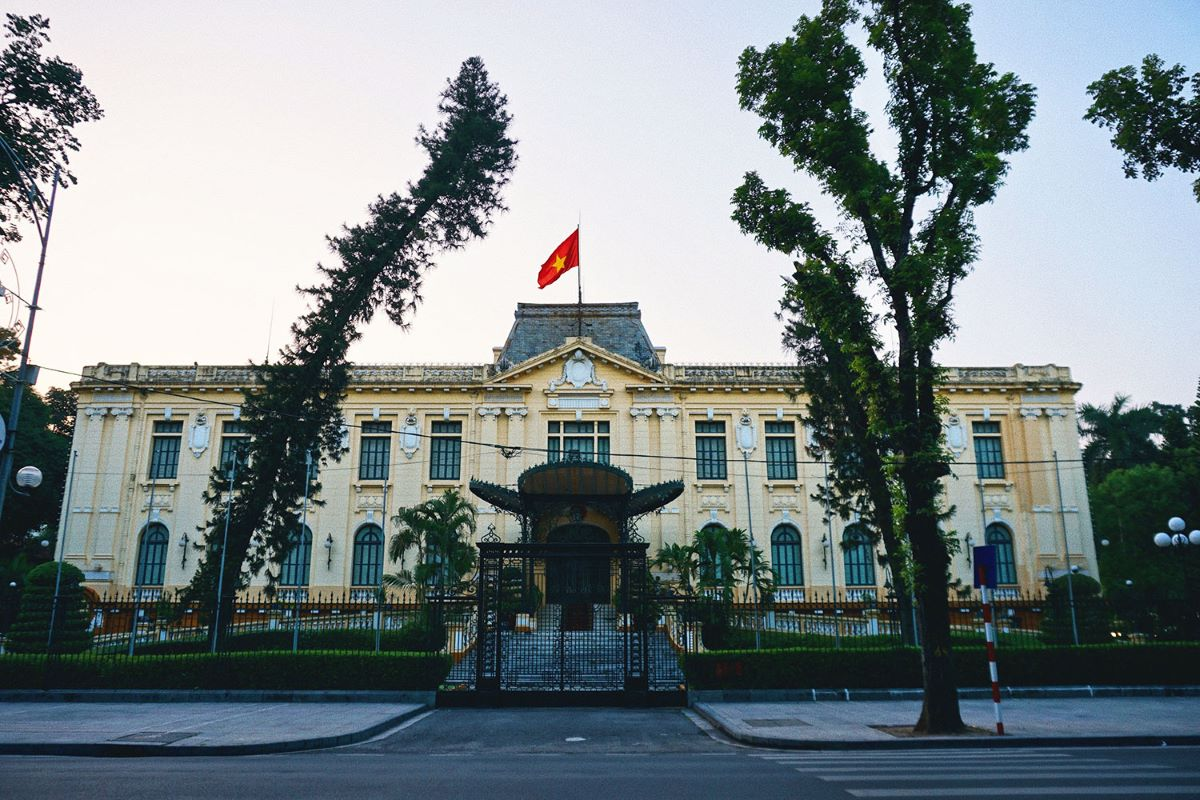 |
| Photo: VnExpress |
The government guest house in Hanoi which is located in 10 Le Thach, Trang Tien, Hoan Kiem, Ha Noi was where the Provisional Government of the Democratic Republic of Vietnam worked from the August Revolution until the Vietnamese national resistance.
Located at No. 12 Ngo Quyen Street( far from the Hanoi old quarter about 500 m) , This building is an important historical relic of Hanoi capital, especially here is associated with the National Day of Resistance Of Vietnam (Dec. 19, 1946).This building was built in 1918-1919 to be the governor of Tonkin – the headquarters of the French colonial government in North Vietnam when the North of Vietnam was still under the domination of French colonist. The building represents the neoclassical architecture of the French colonial period with the layout of the front facing, the façade with strong classical columns and Sculpture of Baroque details of the Renaissance.
Up to now, The Government guest house in Hanoi is still beautiful and peaceful as the first day in 1919. There is only one thing is deferent, as a national government guest house, the building takes on important responsibilities for Vietnam and the building is also a historic witness of many great events of The country.
Trang Tien Plaza
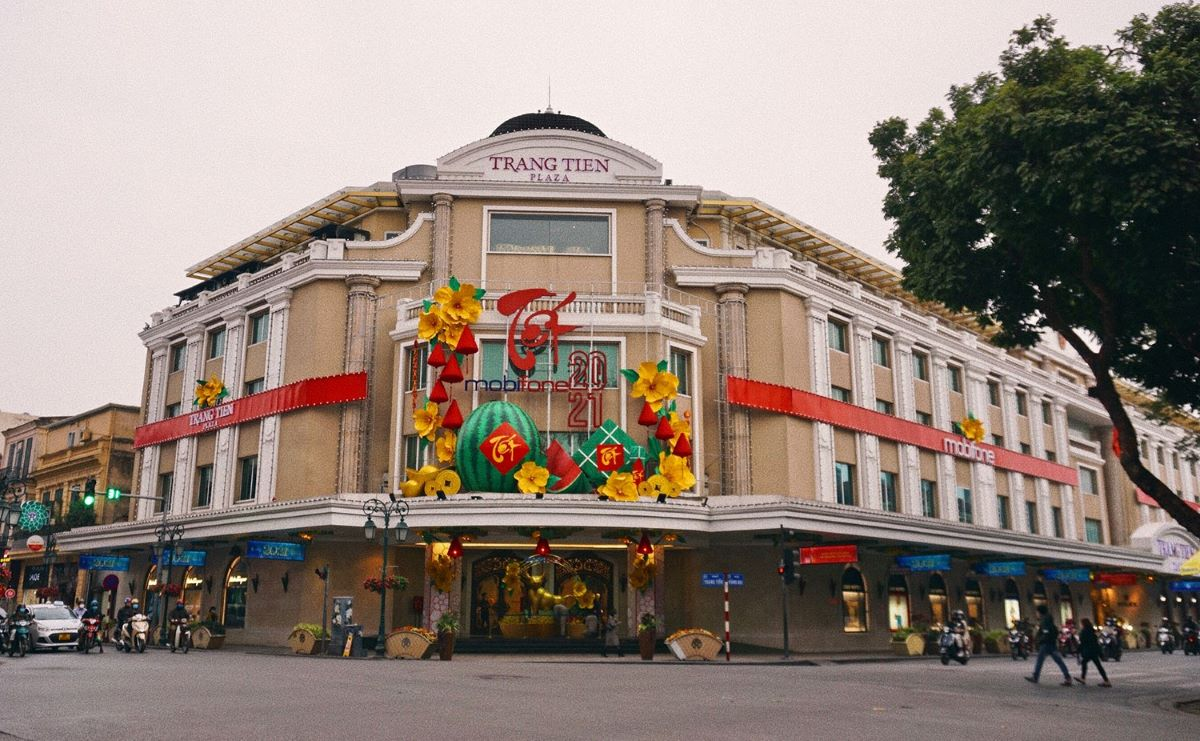 |
| Photo: VnExpress |
Trang Tien Plaza, an iconic landmark Hanoi set at the corner of Hoan Kiem Lake right in the heart of Hanoi. Elaborated in elegant French style of architecture, Trang Tien Plaza shopping mall is open and exhibits a true sense of style and class. ThePlaza shows the sophisticated and rich culture of Hanoi and has the unique beautiful architecture with the inner side built and decorated in European style with white and yellow as the main colors. Every ornamental element in this shopping center is meticulous and sophistical, representing both modern and antique French style.
Located in the heart of Hanoi capital city, Trang Tien Plaza Hanoi is a high-end shopping center and also an iconic landmark of Hanoi. Offering luxury services and a wide range of products, this 21,000 sqm shopping center has attracted many concerns of not only Hanoi people but also tourists cross the world. Nowadays, Trang Tien Plaza which is continuously developing and improving their services, quality and products becomes a great shopping destination and meeting place for everyone.
Hanoi Opera House
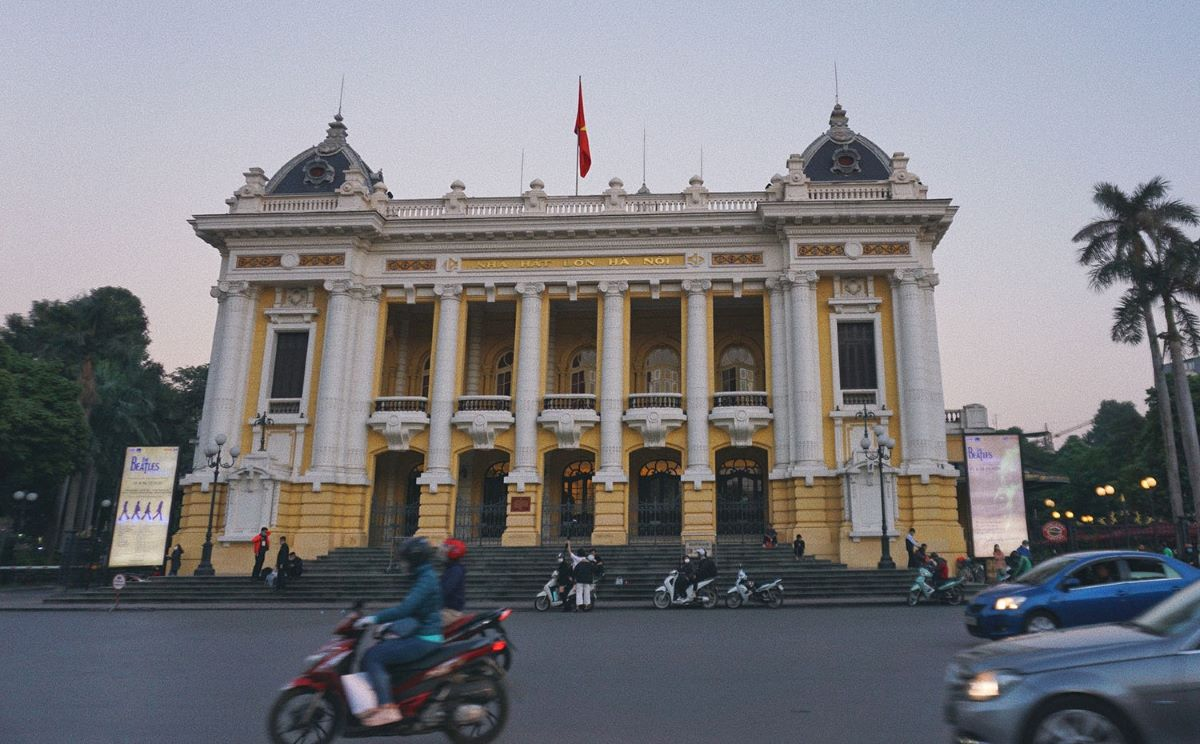 |
| Photo: VnExpress |
Hanoi Opera House is one of the most significant architectural works and historical landmarks in Hanoi, Vietnam - the capital’s theatre of performing arts. Hanoi Opera House is located on the August Revolution Square, located at Trang Tien Street, not far from Hoan Kiem Lake and Vietnam History Museum.
The construction was started by the French in 1901 and completed in 1911, modeled after the Opéra Garnier Theater in Paris, though smaller in stature and using materials suitable for the local climatic conditions. Designed by architects Harlay and Broyer, the building brings many colors and architectural features of the theaters in Southern France, with the organization of the ground, performance space, stairs, entrance to the lobby ... similar to the theaters in Europe in the early 20th century.
Dong Xuan Market
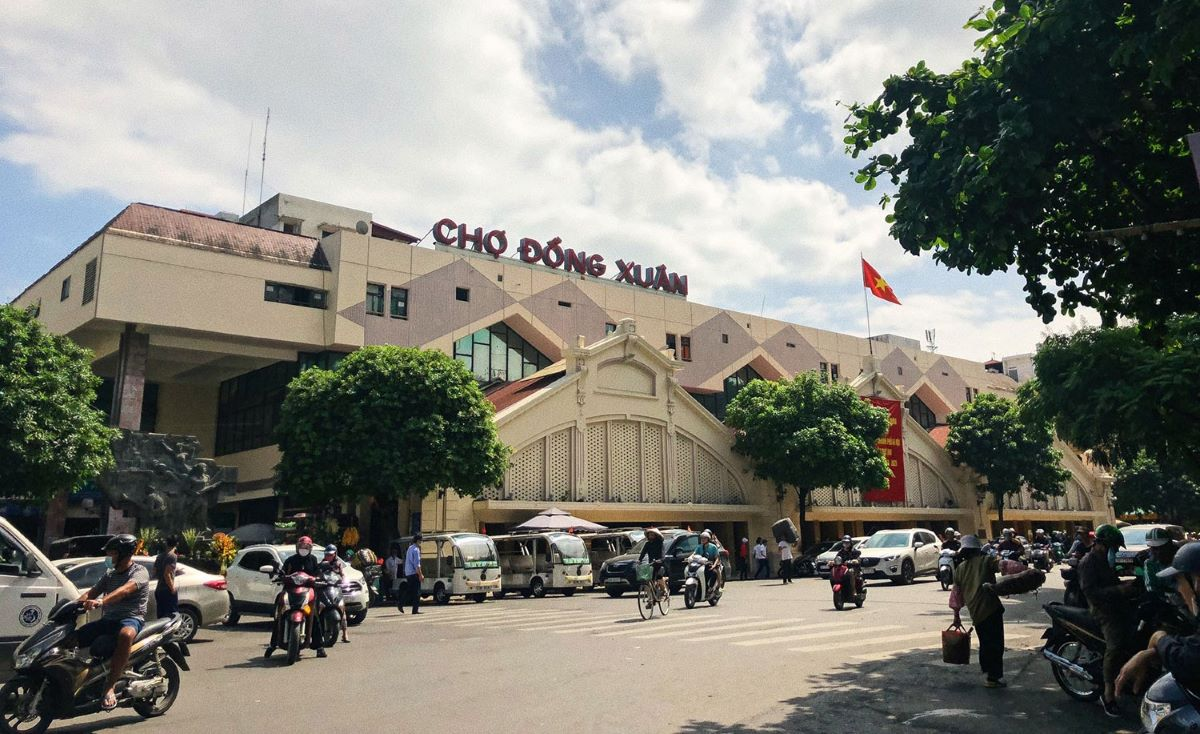 |
| Photo: VnExpress |
This large, non-touristy market is located in the Old Quarter, 900m north of Hoan Kiem Lake. There are hundreds of stalls here and lots of the goods are household items or tat, but it’s a fascinating place to explore to catch a flavour of local Hanoian life. The area around it also has loads of bustling shops, and more stalls appear at night.
At the end of the 19th century, the Old Quarter of Hanoi had two main marketplaces, one at Hang Duong street and the other at Hang Ma street. In 1889, these two markets were closed and replaced by the original Đồng Xuân Market which was built by the order of the French administration in 1889 as one of the principal new architectures of Hanoi, together with Long Bien Bridge which was located nearby and completed in 1902.
The market was constructed in Hanoi's Old Quarter, only 600 m north of Hoan Kiem Lake. The covered area of the market was about 6.500 m² with a large roof of corrugated galvanised iron supplied by the French contractor Poinsard Veyret. The most recognizable feature of the market was the 5-arch entrance corresponding to Dong Xuan Market's five domes, each dome was measured 19 m in height and 25 m in width When the First Indochina War broke out in Hanoi in early 1947, a fierce struggle between Việt Minh and French forces took place in the area of the market on February 14. To commemorate the event, a memorial was erected near the principal gate of the market in 2005.
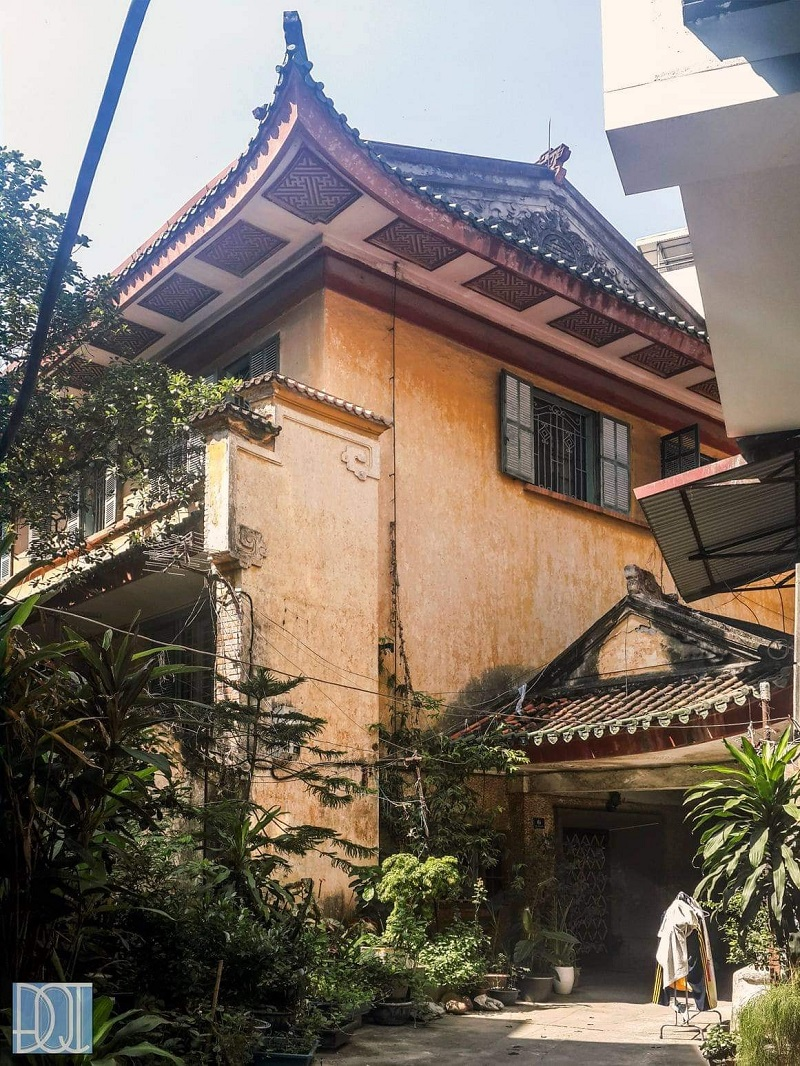 | The charming beauty of King Bao Dai's hundred-year old mansion in Ha Noi Hidden inside an alley in Ngoc Ha Street, Hanoi, is a 110-year-old mansion that used to belong to King Bao Dai, with its special architecture ... |
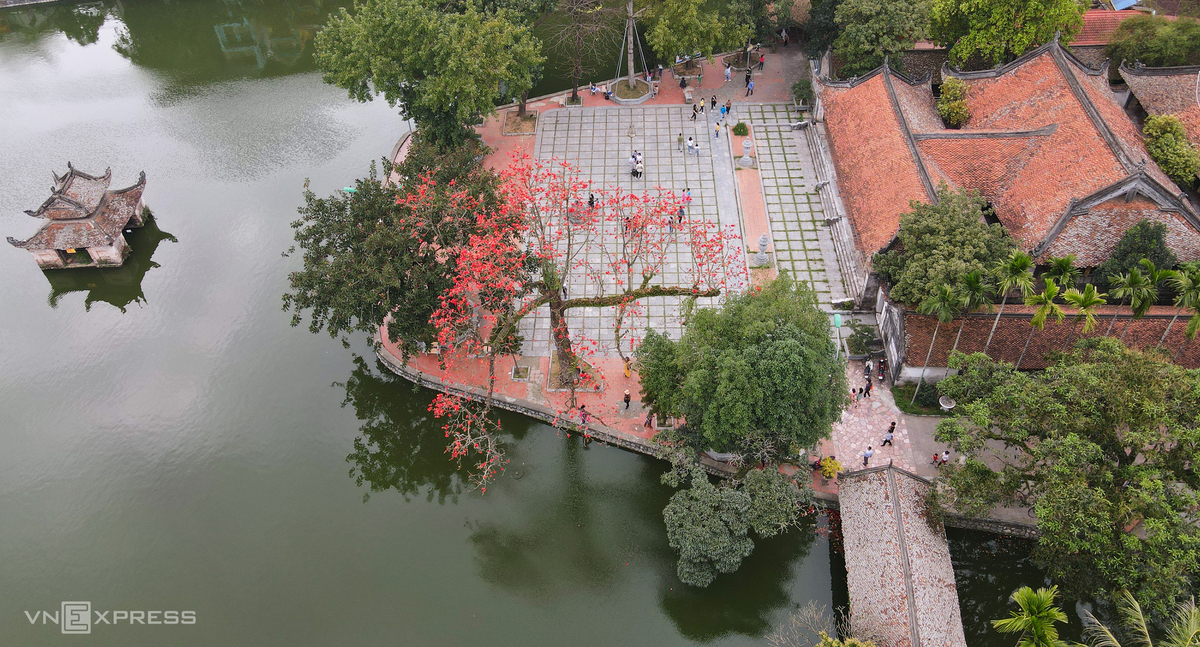 | Hanoi dyed in red of silk cotton flowers In March, red silk cotton flowers burst into full bloom in Hanoi, dying the streets and villages a gloriously red. |
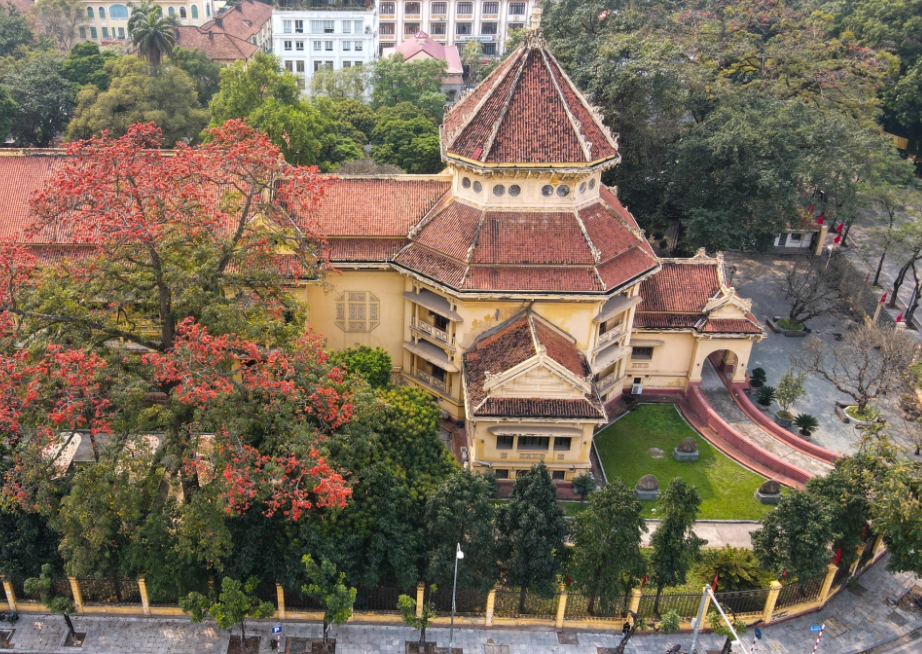 | Hanoi in March: Silk-cotton flowers burn brightly red As March comes, Hanoi is put on a new bright coat embroidered with red silk-cotton flowers. |
Recommended
 Travel
Travel
Strategies for Sustainable Growth of Vietnam’s Tourism from International Markets
 Travel
Travel
Vietnam Strengthens Its Presence On The Global Tourism Map
 Multimedia
Multimedia
Phong Nha-Ke Bang National Park Named Top Adventure Travel Site
 Travel
Travel
Luxury Train From Hanoi To Hai Phong To Be Launched In May
 Travel
Travel
Phong Nha Named Top Budget-Friendly Travel Destination for Spring 2025: Agoda
 Travel
Travel
Four Indian Films Introduced to Lao Cai Audience
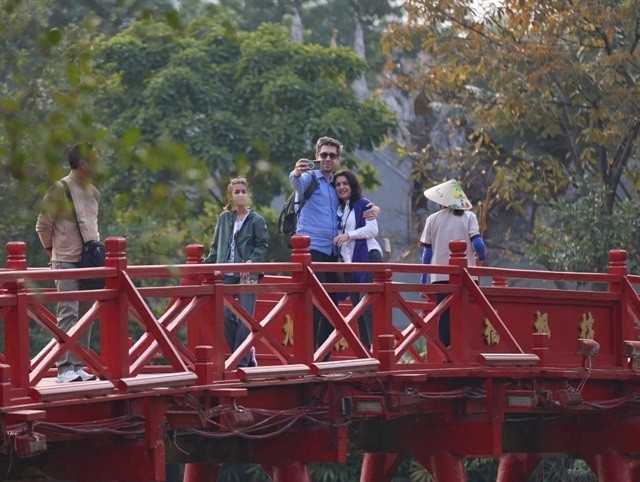 Travel
Travel
Vietnam to Waive Visas for Citizens from 12 Countries until 2028
 Travel
Travel

